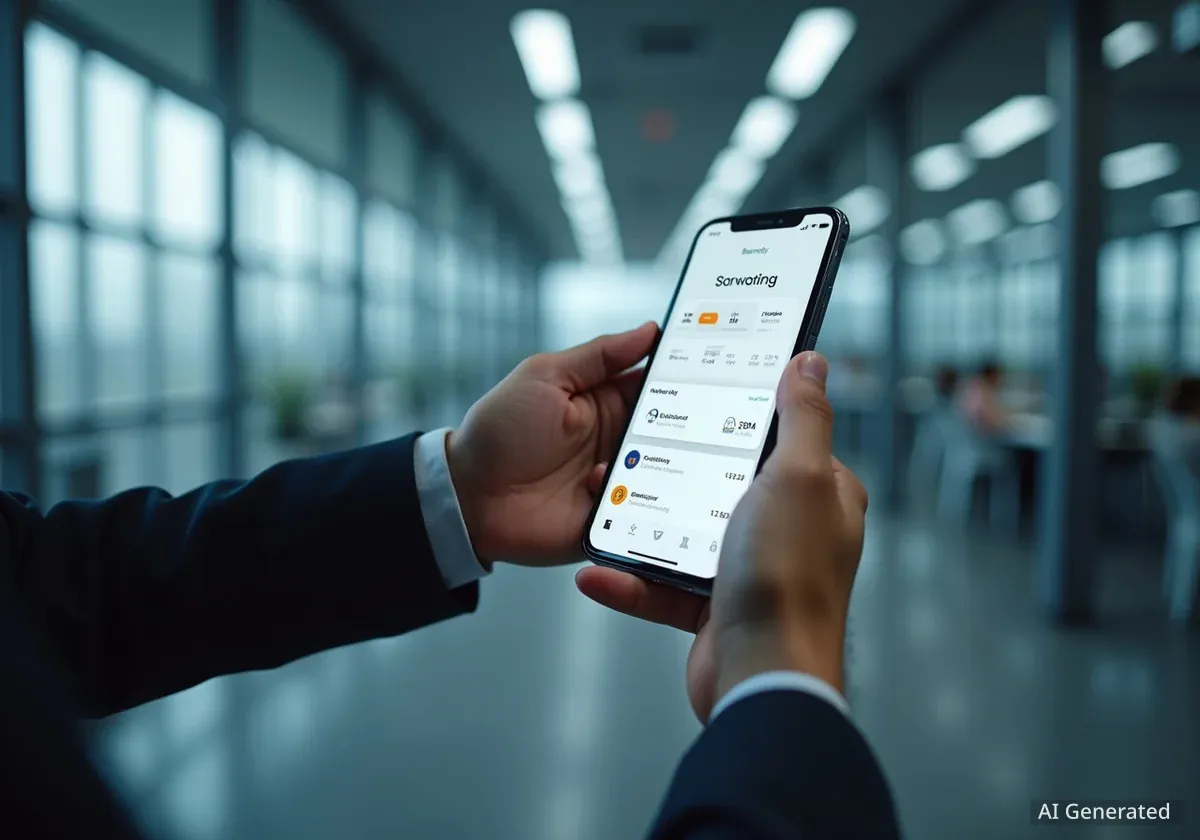A woman from Ascension Parish lost nearly $1,900 in a sophisticated banking scam involving the Zelle payment platform, even after she contacted Chase Bank while the fraudulent transaction was still in progress. Despite her immediate report, the payment was processed, and her subsequent fraud claims were denied.
Key Takeaways
- An Ascension Parish resident, Tara Warrior, lost $1,900.50 to a scammer impersonating Chase Bank.
- The scam began with a fraudulent text message about a Zelle payment, followed by a phone call from a number spoofed to look like a legitimate Chase Bank line.
- Warrior realized she was being scammed mid-transaction and immediately contacted Chase to stop the payment.
- Despite her live report, the transaction was completed, and Chase Bank later denied two fraud claims filed by Warrior.
How the Sophisticated Scam Unfolded
The incident began when Tara Warrior received a text message from a five-digit number while she was at work. The message, appearing to be from Chase Bank, asked her to verify a Zelle payment of $2,000. It instructed her to reply "YES" if the transaction was hers or "NO" if it was not.
After replying "NO," Warrior received a phone call just seconds later. The caller ID displayed an 877-number, which appeared to be a legitimate contact for Chase Bank. This technique, known as caller ID spoofing, is commonly used by scammers to gain the trust of their targets.
Understanding Caller ID Spoofing
Caller ID spoofing allows individuals to deliberately falsify the information transmitted to a caller ID display. Scammers use this to disguise their identity, often making it appear as though the call is coming from a trusted source like a bank, government agency, or local police department. This makes it difficult for consumers to screen for fraudulent calls.
A Convincing Impersonation Builds False Trust
The person on the phone identified himself as "Charles Jennings" and spoke in a calm, professional manner. To appear legitimate, he asked Warrior to verify recent deposits into her account, a step she complied with. This initial verification process helped solidify the scammer's credibility in her mind.
He then instructed her to open her Zelle account through the Chase Bank mobile app. He claimed this was necessary to work with her to stop the fraudulent $2,000 payment that triggered the initial alert. He directed her to input a 10-digit number, which he described as a code to file a claim and recover the funds.
"It added him to my Zelle account," Warrior explained. The 10-digit number was not a claim code but was instead the scammer's own information, linking his account to hers for a transfer.
Red Flags and a Mid-Scam Report
After she entered the number, the scammer placed Warrior on a 15-minute hold. It was during this time that he made a critical mistake. "He wanted to make sure that I would not be locked out of my bank online, and that is when red flags popped up in my head," she recalled.
Sensing something was wrong, Warrior took immediate action. While still on hold with the scammer, she used another phone line to look up an official Chase Bank customer service number and called it. She then merged the two calls, connecting the scammer directly with a real Chase representative.
Warrior informed the Chase employee that she was actively being scammed and requested that all transactions be stopped immediately. Upon realizing he was on a call with the bank, the individual identifying as "Charles Jennings" promptly hung up.
Zelle Scams on the Rise
According to the Federal Trade Commission (FTC), scams involving peer-to-peer payment apps like Zelle have become increasingly common. Because these transactions are often instant and irreversible, they are a prime target for fraudsters. In 2023, reports of payment app fraud continued to climb, with consumers losing millions of dollars.
Bank's Response and Denied Claims
After the scammer disconnected, Warrior remained on the phone with the Chase representative for an hour. She was assured that any fraudulent transactions would be investigated and that her account would be credited within 10 business days. However, later that same night, she watched as the $1,900.50 payment was processed from her account.
In the following weeks, Warrior filed two separate fraud claims with Chase Bank. Both were denied. The bank's position often in these cases is that the customer authorized the payment, even if under false pretenses, making it difficult to recover the funds.
"I reported it in the middle of the scam, I reported it live as it was happening, and they're still ignoring me," Warrior stated, expressing her frustration. "That's what's got me really ticked off."
Customer Questions Bank's Protocol
Warrior is now questioning whether Chase Bank followed its own procedures. The bank's Deposit Account Agreement includes a clause stating it has the right to block or delay transactions if it suspects a customer may be a victim of fraud or financial exploitation, even if the customer has authorized the transaction. Warrior argues that her live report of the scam should have triggered this protective measure.
In response to inquiries, Chase Bank was unable to comment on Warrior's specific case. However, the bank has previously stated that while it does send text alerts, its standard procedure is to ask customers to call the number printed on the back of their debit or credit card for verification.
How to Protect Yourself from Banking Scams
Financial institutions and consumer protection agencies offer clear guidance to avoid falling victim to similar schemes:
- Never trust unsolicited contact. If you receive a text, email, or phone call from someone claiming to be your bank, hang up. Call your bank directly using the official number on your card or their website.
- Banks will never ask you to send money to stop fraud. A legitimate bank will never instruct you to transfer money to yourself or anyone else as a way to reverse a fraudulent charge. This is a common scam tactic.
- Do not share verification codes or personal information. Never provide one-time passcodes, PINs, or other sensitive data to someone who calls you unexpectedly.
- Be wary of pressure tactics. Scammers create a sense of urgency to prevent you from thinking clearly. If you feel rushed or panicked, it is a major red flag.
Consumers who encounter such scams are encouraged to report the incident to their bank and the Federal Trade Commission (FTC) to help track fraud patterns and protect others.





